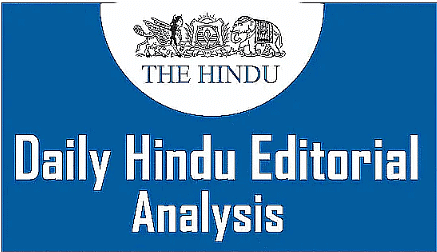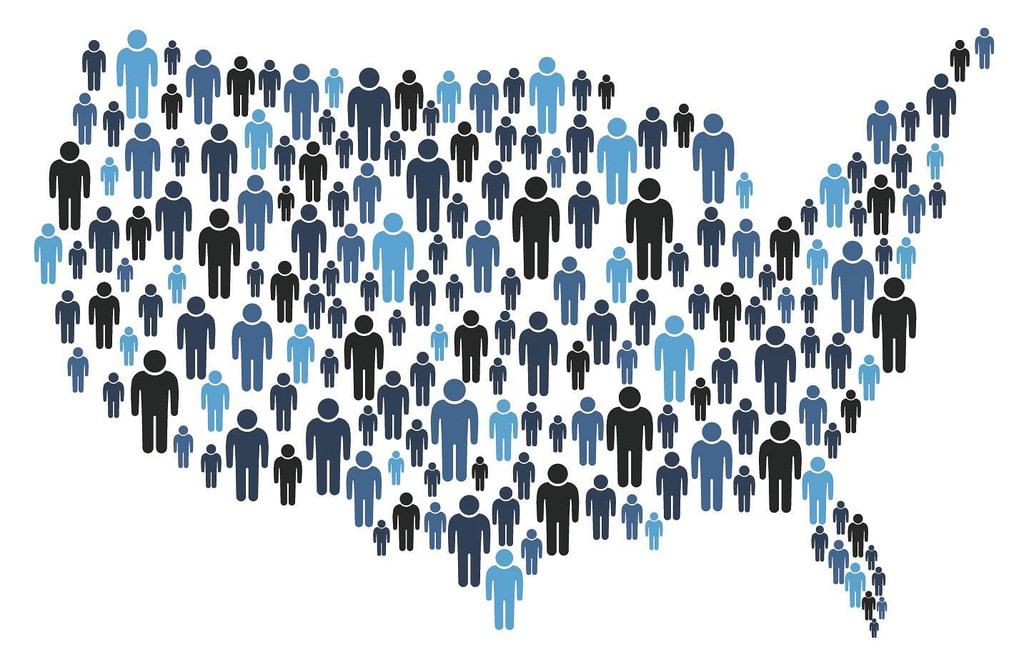The Hindu Editorial Analysis- 30th July 2024 | Current Affairs & Hindu Analysis: Daily, Weekly & Monthly - UPSC PDF Download

Any Further Delay in Census Taking is Perilous
Why in News?
When the Centre did not extend the deadline of June 30, 2024 to freeze administrative boundaries for the purpose of the Census, hopes were raised that the decennial Census operations, initially scheduled to begin in 2020 as a prelude to Census 2021, would at least commence in October 2024. It usually takes about three months after the boundaries are set, to make massive preparations for the field work. However, these expectations were belied when the Budget 2024-25 recently allocated ₹1,309.46 crore for the Census, a significant reduction from 2021-22 when ₹3,768 crore was allocated for the decadal exercise, thereby indicating that it may not be carried out even after the considerable delay. The next Census, therefore, continues to be on hold with the government yet to announce the new schedule.
What is the Census?
- The process of gathering, organizing, assessing, and spreading demographic, economic, and social details about all individuals in a nation or a distinct area within a nation during a particular period is termed a population census.
- It offers details as of a specific time and covers details like demographics, social aspects, and economic figures.
- The Indian Census is among the biggest administrative endeavors globally.
- The Ministry of Home Affairs Office of the Registrar General and Census Commissioner is responsible for conducting the census every decade.
- Prior to 1951, a temporary Census Organization was established for each Census.
- The Census Act of 1948 guarantees the privacy of census data.
- The data collected for the population census is so confidential that not even the judicial system can access it.
- Penalties are specified by the law for both government officials and census authorities in cases of non-compliance or breaches of any Act provision.
Constitutional Support for Census
- The Census Act of 1948 controls how the census is conducted.
- As per Article 246 of the Indian Constitution, the census of the population falls under the Union's jurisdiction.
- This responsibility is defined in the Seventh Schedule of the constitution.
What is the Purpose of the Census?
- To gather data for the planning and policymaking of the Central and State Governments.
- It helps the government decide how to distribute money and support to cities and states.
- Various national and international groups, scholars, businesspeople, producers, and others extensively utilize census information.
What makes the Census significant?
Conducting periodic census is significant for the following reasons:
- Provides the Most Reliable Source of Information: Information about Scheduled Castes and Scheduled Tribes, Language, Religion, Migration, Disability, Economic Activity, Literacy, Housing & Household Amenities, Urbanization, Fertility, and Mortality, along with various socio-cultural and demographic data, can be found in this highly dependable source of information.
- Constituency Reservation and Delimitation: The delineation and reservation of constituencies for Parliamentary, Assembly, Panchayat, and other local bodies are carried out based on the demographic data provided by the Census.
- Administration Purpose: The census forms the basis for assessing the country's progress over the past decade and monitoring the Government's ongoing initiatives.
- Effective Governance: The government utilizes census data for governance, planning, policymaking, as well as for overseeing and appraising various programs.
- Detailed Accounts: Unlike even the most reliable sample surveys, a census aims to count each and every Indian. By connecting with every individual during a census, the state finds it hard to escape or ignore the data.
- Grants: States receive grants from the Finance Commission based on population figures derived from Census data.
- Welfare Schemes: The Census plays a crucial role in identifying beneficiaries and verifying their status over time, allowing for easy comparisons across different time periods.
- Improved Access for Businesses: Businesses and industries can leverage census data to enhance their operations and explore new markets previously untapped.
Census in India so far
- In ancient times, during The Maurya dynasty, the first census activities took place in India.
- These activities were initially held between 1865 and 1872, and have been consistently conducted since 1881, providing reliable information.
- From 1881 to 2011, India conducted censuses every ten years, even amidst challenges like epidemics, wars, and Partition, except for the recent COVID-19 disruption.
- The 2011 Census marked India's fifteenth national census.
- As per the census findings, the Total Fertility Rate (TFR) is steadily decreasing and approaching stability.
- The 2011 Census data revealed that divorce rates in urban and rural areas of India are similar, contrary to previous beliefs. Urban areas have a divorce rate of 0.89%, comparable to the 0.82% rate in rural regions.
Why was the Census of 2021 Delayed Indefinitely?
- Because of the Covid-19 pandemic, the census for 2021 has been postponed.
- However, the upcoming census will mark the first digital Census and will offer a self-enumeration option.
Impact of Delay in Census 2021
Following are the impacts of a delay in Census 2021:
Affects the Public distribution system
- As per the National Food Security Act of 2013, 75% of people living in rural areas can get cheaper food grains through the Public Distribution System.
- In 2011, India had around 1.21 billion residents, so the PDS covered roughly 800 million individuals.
- If we consider the estimated population of 1.37 billion, more than 100 million people would not receive subsidized food benefits. The major gaps would be seen in Uttar Pradesh and Bihar, with about 28 million and 18 million people expected to be left out, respectively.
Huge lag in Migration data
- During the Covid-19 lockdowns, it became clear that the current data from the 2011 Census couldn't provide accurate numbers, reasons, and patterns of migration.
- The migration tables from the 2011 Census were only released in 2019, making them outdated even upon publication.
- Migration data isn't extensively utilized in significant economic policy and planning.
Welfare Schemes
- Despite the Government's aim to use SECC data, the budget allocation for the planned expansion was unsuccessful.
- While most schemes don't rely on census data to identify beneficiaries, the planning, budgeting, and implementation of policies are influenced by it.
- Several programs need to utilize detailed age and fertility data to assess their effectiveness as demographics evolve over time.
Key findings of 2011 Census
Following are the key findings of the 2011 Census:
Population
- Between 2001 and 2011, India's population grew by 17.7%, reaching 1.21 billion. Female population growth was higher than male growth.
- Bihar had the highest population growth at 25.4%, with 14 other states and union territories also experiencing growth rates above 20%.
Rural and Urban Population
- The urban population in India increased from 17.3% in 1951 to 31.2% in 2011.
- NCT Delhi had the highest proportion of urban residents at 97.5%.
- Top five states with the highest urban population percentages are Goa, Mizoram, Tamil Nadu, Kerala, and Maharashtra.
Literacy
- India's literacy rate improved from 64.8% in 2001 to 73% in 2011. Men's literacy rate is now at 80.9%, while women's rate is at 64.6%.
- Dadra and Nagar Haveli, Bihar, and Tripura showed significant gains in literacy rates.
Density
- India's population density increased from 325 in 2001 to 382 in 2011.
- Bihar surpassed West Bengal in population density, with Delhi and Chandigarh having the densest populations.
Sex Ratio
- In 2011, there were 940 females per 1000 males in India, a 10% increase from the previous census.
- States like Haryana, Jammu & Kashmir, Punjab, Bihar, and Uttar Pradesh had lower female-to-male ratios.
Child Population
- There was a slight increase in the number of children aged 0 to 6 years, with a decrease in the sex ratio for this age group.
- States like Gujarat, Jammu and Kashmir, Haryana, Punjab, and Jammu and Kashmir had lower sex ratios for children aged 0 to 6.
SC/ST Data
- India has seen an increase in the number of Scheduled Castes (SC) and Scheduled Tribes (ST) populations since the last census.
- There are revisions in the list of SCs/STs in states and union territories.
- The number of SC and ST individuals has increased by 20% and 23.7% respectively.
Religious Demographics
- As per the 2011 census, Hindus make up 79.8% and Muslims make up 14.23% of India's population.
- A category for "No Religion" was introduced for the first time, with 2.87 million people falling into this category.
Socio-Economic and Caste Census (SECC)
- For the first time since 1931, the Socio-Economic and Caste Census (SECC) was conducted in 2011.
- Its purpose was to survey every household in India, whether in cities or villages, and ask about:
- To help government authorities at different levels create various indicators of lack or need, which they can use to identify a poor or deprived individual.
- To assist the government in reevaluating whether different caste groups are more or less economically privileged.
Significance of SECC Census
- Socioeconomically disadvantaged individuals can benefit from using SECC data to identify inequalities.
- Having statistical proof can back the need for caste-based affirmative action or welfare initiatives.
- Courts insist on quantifiable data to support current reservation levels.
- The Indian Constitution upholds the notion of conducting a caste census.
- Article 340 requires the formation of a commission to investigate socially and educationally disadvantaged groups and propose relevant governmental measures.
Concerns Related to SECC Sensus
- A caste census will have political and social consequences because caste has a strong emotional aspect.
- Caste enumeration has prompted inquiries about whether it adds to or reinforces identities.
- In India, caste has never functioned as a substitute for class or underprivileged status; instead, it signifies a distinct type of deep-rooted prejudice that often extends beyond class.
Conclusion
The census is crucial and invaluable because it acts as a storage place for all the available details about the country and is a social advantage because it is carried out openly, willingly, and with the help of public money. The wide range of observed migration patterns towards smaller secondary communities outside the major cities is likely to be captured by the new Census. It could offer insights into the kinds of healthcare and social services that are most required and their locations. Basically, it is a way for the government to demonstrate its willingness to interact with the citizens who will eventually form the nation by visiting each of their residences.
|
57 videos|5393 docs|1142 tests
|
FAQs on The Hindu Editorial Analysis- 30th July 2024 - Current Affairs & Hindu Analysis: Daily, Weekly & Monthly - UPSC
| 1. Why is any further delay in census taking considered perilous? |  |
| 2. What are the potential consequences of delaying the census? |  |
| 3. How does timely census taking contribute to the overall development of a country? |  |
| 4. What are the challenges faced in conducting a census, and how can they be addressed? |  |
| 5. How can individuals contribute to ensuring a successful census process? |  |















